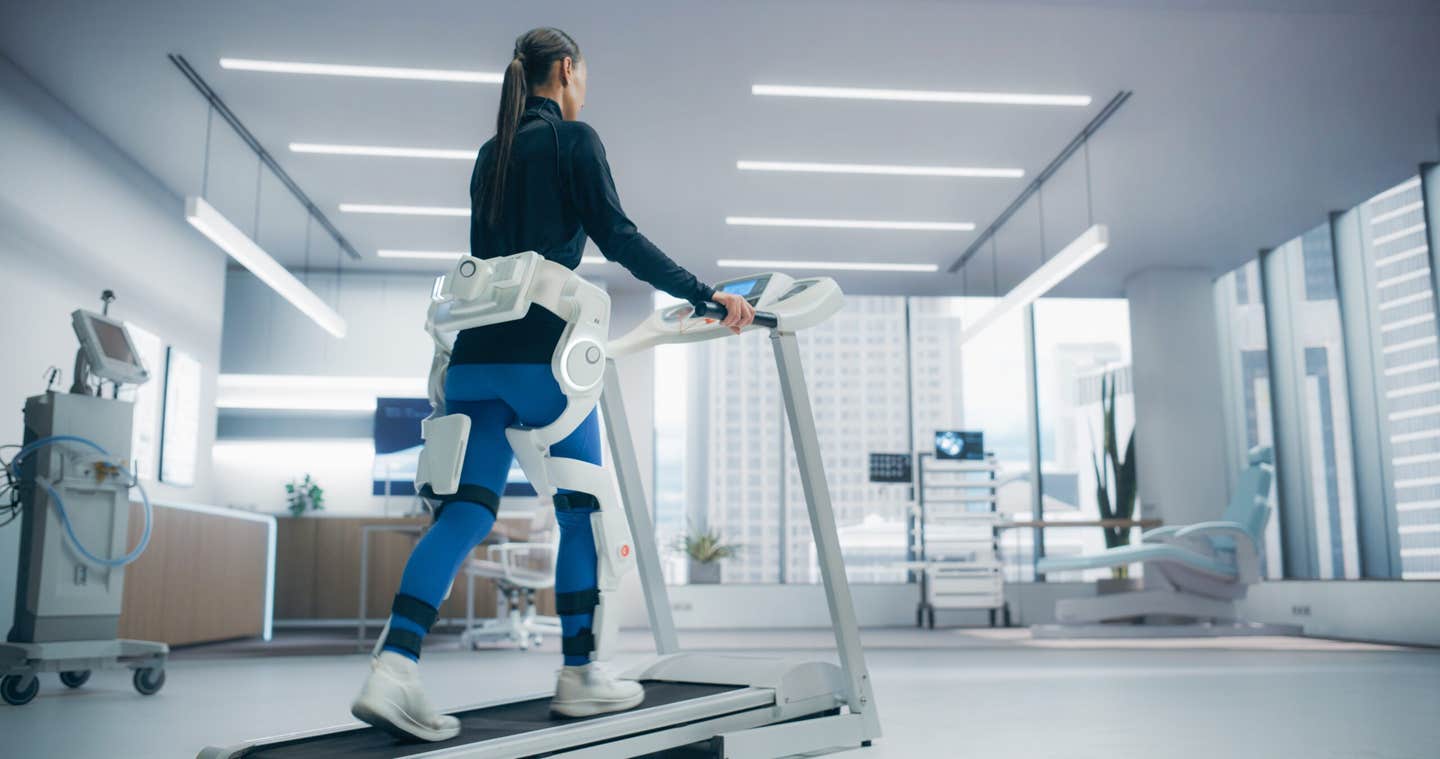The body’s hidden weapon against Alzheimer’s disease: muscles
New research finds a muscle protein can protect memory in Alzheimer’s, revealing a surprising link between muscle health and brain survival

 Edited By: Joshua Shavit
Edited By: Joshua Shavit

Scientists say a protein made by working muscles rescued memory in mice with Alzheimer’s signs, suggesting the body could help heal the brain. (CREDIT: Shutterstock)
Alzheimer’s disease steals memory, independence and, too often, life itself. Drugs can ease symptoms, but none halt the march of the illness. For years, scientists have aimed their efforts at the brain, hunting for ways to clear the sticky protein plaques linked to dementia. Now, a new study suggests help might come from an unexpected partner in the body: muscle.
Researchers at Florida Atlantic University and the University of Copenhagen report that a protein released by working muscles can protect memory and preserve brain health in mice engineered to develop Alzheimer’s-like disease. The work, published in the journal Aging Cell, hints that the path to saving the mind may also run through the body.
The protein is Cathepsin B, called Ctsb for short. It has a dark reputation because it appears in cancer and brain injury. But scientists have also learned that it acts as a “myokine,” a signal molecule made by muscle. In people, Ctsb levels rise after exercise or electrical muscle stimulation. Higher levels have been linked with sharper thinking.
Turning exercise into biology
You already know that physical activity lifts mood and improves mental sharpness. What you may not know is how much muscle “talks” to the brain. When muscles work, they release messages that travel through blood and change how the brain behaves. Researchers wanted to see if they could recreate part of that message without forcing animals to train.
Henriette van Praag, an associate professor at Florida Atlantic University and a member of the FAU Stiles-Nicholson Brain Institute, led a team that tried a daring approach. Instead of making mice run, they used a gene therapy method to raise Ctsb levels directly in muscle.
“Our study is the first to show that expressing Cathepsin B specifically in muscle can prevent memory loss and maintain brain function in a mouse model of Alzheimer’s disease,” van Praag said.
The team worked with a standard Alzheimer’s mouse model known as APP/PS1. These mice develop plaque buildup, brain inflammation and memory trouble as they age. At four months, before severe disease sets in, the animals received a harmless virus carrying the Ctsb gene. The virus was designed to switch on mostly in skeletal muscle. Other mice got a “blank” virus for comparison.
What the mice revealed
By the time the animals reached 10 months, the difference was clear. Mice with Alzheimer’s that received the muscle treatment found hidden platforms faster in water maze tests. They better remembered locations after a day passed. They also showed more normal reactions to sounds and settings in fear tests.
In short, their memory looked more like that of healthy mice.
Mice with the disease also moved better. Untreated animals had trouble staying on a rotating rod, a simple balance task. Those with extra Ctsb in muscle held on as long as the healthy controls.
The brain seemed to notice the muscle signal. In a region vital for learning called the hippocampus, treated Alzheimer’s mice had far more newborn nerve cells. That matters because the disease sharply lowers the brain’s ability to make new neurons over time.
The results were not all good news. Healthy mice that received the treatment showed weaker memory on some tests. The same help that rescued sick animals appeared to confuse healthy ones.
Not the usual Alzheimer’s story
Perhaps the most striking part of the study is what did not change. The therapy did not clear amyloid plaques. It did not reduce immune cells that become overactive in Alzheimer’s. The classic fingerprints of the disease remained.
Yet memory improved anyway.
“To see behavior recover while plaques stayed the same was surprising,” one researcher said privately. The team believes the muscle signal works by strengthening the brain’s inner machinery rather than sweeping away debris.
The scientists analyzed thousands of proteins in brain, blood and muscle. In treated Alzheimer’s mice, proteins tied to making and managing RNA rose to healthier levels. Other shifts hinted that brain cells could build proteins more easily. Signals that support cell growth and communication also moved in the right direction.
Atul S. Deshmukh, an associate professor at the University of Copenhagen, said this shows how close the bond is between muscle and mind.
“Muscle is not just a mechanical tissue,” he said. “It is a powerful communicator with the brain.”
Blood samples from treated mice carried their own clues. Chemical paths linked to energy use improved. Harmful inflammation signals softened. The body as a whole began to resemble that of a younger, healthier animal.
Promise with caution
The researchers stress that this is still early science. Only male mice were studied. The groups were small. Other models of Alzheimer’s may respond differently. Most important, treatments that help mice can fail in people.
There is another caution. Because healthy mice reacted badly, any future therapy would need careful control. What helps a damaged brain may hurt a strong one.
Still, outside experts see the work as bold.
“These studies represent a significant step,” said Randy Blakely, executive director of the Stiles-Nicholson Brain Institute. “They show how signals from our muscles can profoundly influence memory and cognition.”
The finding also gives fresh meaning to old advice about staying active. Exercise may not just keep your heart strong. It may send chemical hugs to your brain.
Practical Implications of the Research
The study points to an entirely new target for dementia therapy: skeletal muscle. Instead of focusing only on clearing plaques in the brain, researchers may explore ways to boost helpful muscle signals.
In the future, this could lead to drugs that raise or mimic muscle proteins like Ctsb without gene therapy. Clinics might tailor treatments based on whether a person already shows cognitive decline.
The research also strengthens the medical case for regular exercise. Muscle health may be one of your best defenses against brain disease. Programs for older adults could use this insight to design workouts that protect both body and mind.
For scientists, the work opens a door to studying the body as an integrated network rather than isolated organs. What happens in muscle, blood or liver may quietly shape the fate of nerve cells in the brain.
Research findings are available online in the journal Aging Cell.
Related Stories
- Shingles vaccine proves most promising drug for prevention of Alzheimer’s disease
- Major study reveals why Alzheimer’s patients forget their family, friends
- Daily physical activity lowers Alzheimer’s disease risk in older adults
Like these kind of feel good stories? Get The Brighter Side of News' newsletter.
Joseph Shavit
Science News Writer, Editor-At-Large and Publisher
Joseph Shavit, based in Los Angeles, is a seasoned science journalist, editor and co-founder of The Brighter Side of News, where he transforms complex discoveries into clear, engaging stories for general readers. With experience at major media groups like Times Mirror and Tribune, he writes with both authority and curiosity. His work spans astronomy, physics, quantum mechanics, climate change, artificial intelligence, health, and medicine. Known for linking breakthroughs to real-world markets, he highlights how research transitions into products and industries that shape daily life.



